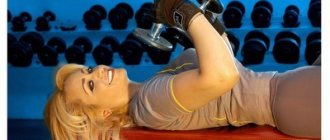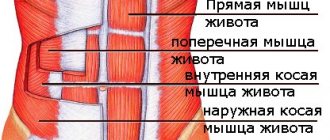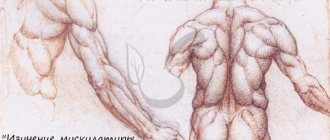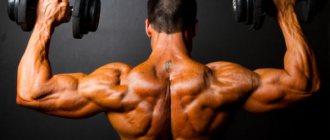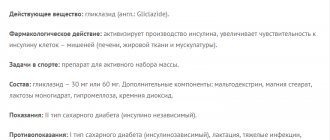Author: Timko Ilya - the ruler of the entire site and fitness trainer | more details >> Rod. 1984 Trained since 1999 Trained since 2007. Author and creator of the site tvoytrener.com. CCM in powerlifting. Champion of Russia and South Russia according to AWPC. Champion of the Krasnodar region according to IPF. 1st category in weightlifting. 2-time winner of the Krasnodar Territory championship in t/a. Author of more than 700 articles on fitness and amateur athletics. Author and co-author of 5 books.
Place in the ranking of authors:
out of competition
(become an author)
Date:
2012-05-29
Views:
740 614
Rating:
5.0
| All articles by the author >> | Medals articles >> |
Articles are loading...
| Article medals: | article in TOP 100 | more than 500 thousand views |
Why medals are given to articles:
| Bronze medal: | |
| 1. The article is in the TOP 100 2. The article has more than 3. The article has more than 100 | |
| Silver medal: | |
| 1. The article is in the TOP 50 2. The article has more than 3. The article has more than 500 | |
| Gold medal: | |
| 1. The article is in the TOP 10 2. The article has more than 1 3. The article has more than 1,000 | |
Primary muscles - iliopsoas Additional - rectus abdominis Difficulty - medium
Do you need a press bench at home?
Such fitness equipment as a press bench is not essential sports equipment, but its presence will allow you to perform various exercises with greater comfort and technically correct.
If we talk only about abdominal training, then a bench is not necessary for these exercises. In home training, the abdominal muscles can be well worked out without using any equipment, for example, by performing straight crunches and leg lifts. All these exercises are performed without the use of sports equipment while lying on the floor.
It’s another thing to do other exercises at home without having any sports equipment. For example, pullovers, flyes, dumbbell or barbell presses become a big problem, because you will have to adapt household utensils for them. As a result, the exercise will either be performed technically incorrectly, which will make the training ineffective, or even make the exercises hazardous.
It may not be possible to build a convenient and reliable structure, in our case a bench. An abdominal bench will allow you to include exercises for different muscle groups into the training process with minimal equipment. The athlete also gains control over movements, exercises become safer, and the training itself becomes much more effective and comfortable.
Hyperextension on the buttocks and back
This exercise with dumbbells on a bench (incline) will pump up your buttocks. No, we are not talking about banal squats, but static muscle tension. In addition, if you shift the load to your back, you can pump it up too. The most important thing is to take a larger load. Alternatively, you can use a Roman chair as an alternative to a bench (in fact, it works even better).
- We fix the legs between the bars at the lowest possible distance.
- We take the heaviest dumbbell in our hands and lift it to the chin.
- Slightly tilt the body down so that the back and buttocks are tense.
- Try to maintain an even position for as long as possible.
If you don’t like doing static exercises, you can start bending forward (only possible if you use a Roman chair). This back exercise with dumbbells on a bench is one of the most effective because it allows you to simultaneously pump several muscle groups at once. But you will have to take less load than for statics.
What types of press benches are there?
There are not many types of benches for the press, but they all have their own characteristics.
- The most popular are adjustable abdominal benches with a variable backrest angle. Such models allow you to perform various exercises, work your abs and back from different angles, thereby changing the load and emphasis on different muscle areas.
- Another option that is very popular is benches with a reverse backrest angle . They are suitable for more advanced athletes. Their disadvantage is the inability to perform many exercises.
- The next type of benches for the press are models with a folding design . They are suitable for use in small residential spaces. The disadvantage of this equipment is its relatively weak design.
- Benches with a curved back - these models are designed for athletes who have problems in the lower spine (lower back). Due to the bending, their functionality is less.
- Adjustable abdominal benches.
- Bench with a reverse backrest angle.
- Folding bench.
- Benches with a curved back.
The best bench exercises for abs
There are a lot of exercises that can be performed on the abdominal bench. Their number depends on the design of the bench. Some of the models allow you to perform hyperextension.
Here is a short list of exercises that can be performed on most ab benches.
Crunches
- Take a lying position with your legs between the fixing rollers.
- The movement towards the knees is carried out by contracting the abdominal muscles.
- The back should be rounded throughout the entire amplitude.
- Your hands can be pressed to your chest or behind your head.
- The exercise can also be performed with additional weights (with a dumbbell, weighted disk, ball).
- The upward movement is performed while exhaling.
- You can also perform oblique twists by adding a rotation of the body in the middle of the amplitude (alternately).
Read more about incline crunches →
Leg Raise
- Take a position on the bench so that your pelvis is on the edge of the bench and your head is near the fixing rollers.
- Hold onto the bolsters or edges of the bench with your hands.
- In the starting position, the legs should be vertical.
- Due to the tension of the abdominal muscles, the lower back should be pressed against the bench.
- Lower your legs as you inhale until they are parallel to the floor.
- Perform the return movement while exhaling.
- To simplify the technique, the exercise can be performed at half amplitude or lower the legs alternately.
Dumbbell Bench Press
The exercise can be performed at various angles, but we will consider the horizontal press option.
- The bench must be set in a horizontal position.
- Lying on a bench, rest your feet on the floor or fix them on bolsters.
- Place dumbbells at your shoulder joints. Elbows should point down.
- Exhale and push the dumbbells up, straightening your elbows.
- As you inhale, return to the starting position.
- When pressing, try to keep your chest open and your shoulders back.
You can use a barbell for this exercise, however, you will need additional equipment (racks) or a partner to do this.
You can also perform dumbbell flyes while lying down for the pectoral muscles.
Stepping onto a bench
The exercise is aimed at working the muscles of the legs and buttocks. It can be performed without additional weights.
- Stand facing the bench. Take a step with your foot on the bench.
- Push your body weight with your heel as you exhale, straighten your knee and rise onto the bench, placing your other leg.
- Then, in reverse order, lower your feet to the floor while inhaling.
- The movement on each leg should be alternated.
- The exercise can be performed with weights. Dumbbells or leg weights are a great option for an added challenge.
Reverse push-ups
The exercise is aimed at working the triceps and pectoral muscles without additional weights.
- You need to turn your back to the bench, place your palms under your shoulders on the edge of the bench, and your torso closer to the edge of the bench.
- Your legs should be straightened in front of you, resting on your heels.
- As you inhale, bend your elbows to a right angle, lowering your pelvis lower to the floor.
- As you exhale, straighten your elbows fully using the strength of your triceps.
To simplify the technique, your knees can be bent. A more difficult option is to use weights (a barbell or a weighted disk) or an additional elevation for the legs.
Read more about push-ups →
The bench allows you to perform push-ups (classic) on a hill, in which your hands are placed on the bench, as well as placing your feet at the top and doing push-ups from the floor, performing an exercise with a negative incline.
General rules for performing exercises
In order for exercises on the bench to be effective and bring the desired results, you need to use this device correctly, namely:
- during training, the abdominal muscles should be tense all the time;
- inhalation should be done during flexion, and exhalation during extension;
- the chin should not be pressed to the chest, since the neck is a continuation of the line of the spine;
- there is no need to rush;
- to increase the load on the abs, it is necessary to constantly increase the angle of the bench, gradually add additional weights in the form of dumbbells, weights, and so on.
Recommendations for training
- When using an ab bench, do not ignore the warm-up.
- Having a bench for the press does not necessarily use it to work out the abdominal muscles; train other muscle groups with the help of the bench. The training complex should include exercises for the legs, back, chest and deltoids.
- If you exercise without weights, perform exercises in the range of 20-30 repetitions for 3-4 sets. Such training on the press bench will be aimed at improving the aesthetics of the muscles.
- If the training is aimed at increasing muscle volume, then the presence of additional equipment is mandatory, and the number of repetitions is reduced to 10-12, even in the “twisting” exercise.
basic information
Abdominal muscles are the walls of the abdominal cavity, by constantly training which you can form a “steel” press with cubes. Correct biomechanics of movements is a guarantee of training effectiveness. To understand “what’s what”, it is necessary to study the features of the structure and location of the abdominal muscles of the abdomen:
- Straight. Located in the area of 5-7 ribs - from the xiphoid process of the sternum to the pubic bone. The muscle is quite long and consists of “bundles” of tendons consisting of longitudinal fibers. It is thanks to the pumping of the rectus muscle that cubes are formed on the abdomen.
- Transverse. Differs in transverse arrangement. Her stretched tendons are located in front of the rectum. By training the transverse muscles, you can get rid of the “problematic” lower abdomen.
- Oblique. They are divided into external and internal. The first are located under the skin itself, attached to the 5-7 rib, the pubic symphysis and the iliac crest. Intrinsic muscles are connections of deep fibers. They are more designed to protect internal organs.
It is worth developing the abdominal muscles of the press not only for aesthetic purposes. They support and protect the internal organs of the abdominal cavity. Participation in breathing is another of their properties. Developed abdominal muscles allow you to easily cope with the following exercises:
- turns;
- extension of the body;
- twisting, etc.
The result of pumping up the press will not take long if the program was created by a trainer. It is also important to adhere to a certain diet to reduce the amount of body fat.

